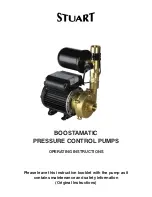
and charge to nameplate amount. (This information may be
obtained from the physical data table also.) The charging label and
the tables shown refer to system temperatures and pressures in
Cooling mode only. A refrigerant charging label is attached to the
outside of the service access door. If charge level is suspect in
Heating mode, reclaim all refrigerant and charge to nameplate
amount. (This information may be obtained from the physical data
table also.)
IMPORTANT:
When evaluating the refrigerant charge, an indi-
cated adjustment to the specified factory charge must always be
very minimal. If a substantial adjustment is indicated, an abnormal
condition exists somewhere in the cooling system, such as insuf-
ficient airflow across either coil or both coils.
REFRIGERANT CHARGE
The amount of refrigerant charge is listed on the unit nameplate
and/or the physical data table. Refer to the Refrigeration Service
Techniques Manual, Refrigerants Section.
NO CHARGE
Check for leak. Use standard evacuating techniques. After evacu-
ating system, weigh in the specified amount of refrigerant (refer to
system data plate).
LOW CHARGE COOLING
Use Cooling Charging Chart (Fig. 27). Vary refrigerant until the
conditions of the chart are met. Note that charging charts are
different from type normally used. Charts are based on charging
the units to correct subcooling for the various operating conditions.
Accurate pressure gauge and temperature sensing devices are
required. Connect the pressure gauge to the service port on the
suction line. Mount the temperature sensing device on the suction
line and insulate it so that the outdoor ambient does not affect the
reading. Indoor air CFM must be within the normal operating
range of the unit.
TO USE COOLING CHARGING CHARTS
Take the liquid line temperature and read the manifold pressure
gauges. Refer to the chart to determine what the liquid line
temperature should be.
NOTE:
If the problem causing the inaccurate readings is a
refrigerant leak, refer to Check for Refrigerant Leaks section.
INDOOR AIRFLOW AND AIRFLOW ADJUSTMENTS
For heating and cooling operation, the recommended airflow
is 350 to 450 cfm for each 12,000 Btuh of rated cooling
capacity. For units with optional electric heat, the airflow
must not be reduced below the levels stated in Table 2.
Tables 4A & 4B show both heating and cooling airflows. Refer to
these tables to determine the airflow for the system being installed.
NOTE:
Be sure that all supply-and return-air grilles are open, free
from obstructions, and adjusted properly.
Airflow can be changed by changing the set up pins on the Easy
Select™ board.
Unit 50XZ utilizes state of the art ECM (Electronic Computated
Motor) ID Blower Motors.
Step 4—Defrost Control
QUIET SHIFT
Quiet Shift is a field-selectable defrost mode, which will eliminate
occasional noise that could be heard at the start of defrost cycle
and restarting of heating cycle. It is selected by placing DIP switch
3 (on defrost board) in ON position.
When Quiet Shift switch is placed in ON position, and a defrost is
initiated, the following sequence of operation will occur. Revers-
ing valve will energize, outdoor fan will turn off, compressor will
turn off for 30 sec and then turn back on to complete defrost. At
the start of heating after conclusion of defrost reversing valve will
de-energize, compressor will turn off for another 30 sec, and the
outdoor fan will stay off for 40 sec, before starting in the Heating
mode.
DEFROST
The defrost control is a time/temperature control which includes a
field-selectable time period (DIP switch 1 and 2 on the board)
between defrost cycles of 30, 60, 90, or 120 minutes (factory set at
30 minutes).
To initiate a forced defrost, two options are available depending on
the status of the defrost thermostat.
Fig. 25—Typical Heat Pump Operation, Heating Mode
C03012
COMPRESSOR
ACCUMULATOR
OUTDOOR COIL
INDOOR COIL
LCS
LEGEND
HPS – High Pressure Switch
LCS – Loss of Charge Switch
Accurater
®
Metering De vice
Arrow indicates direction of flo
w
TXV in Bypass
Position
Metering
Position
HP S
20













































